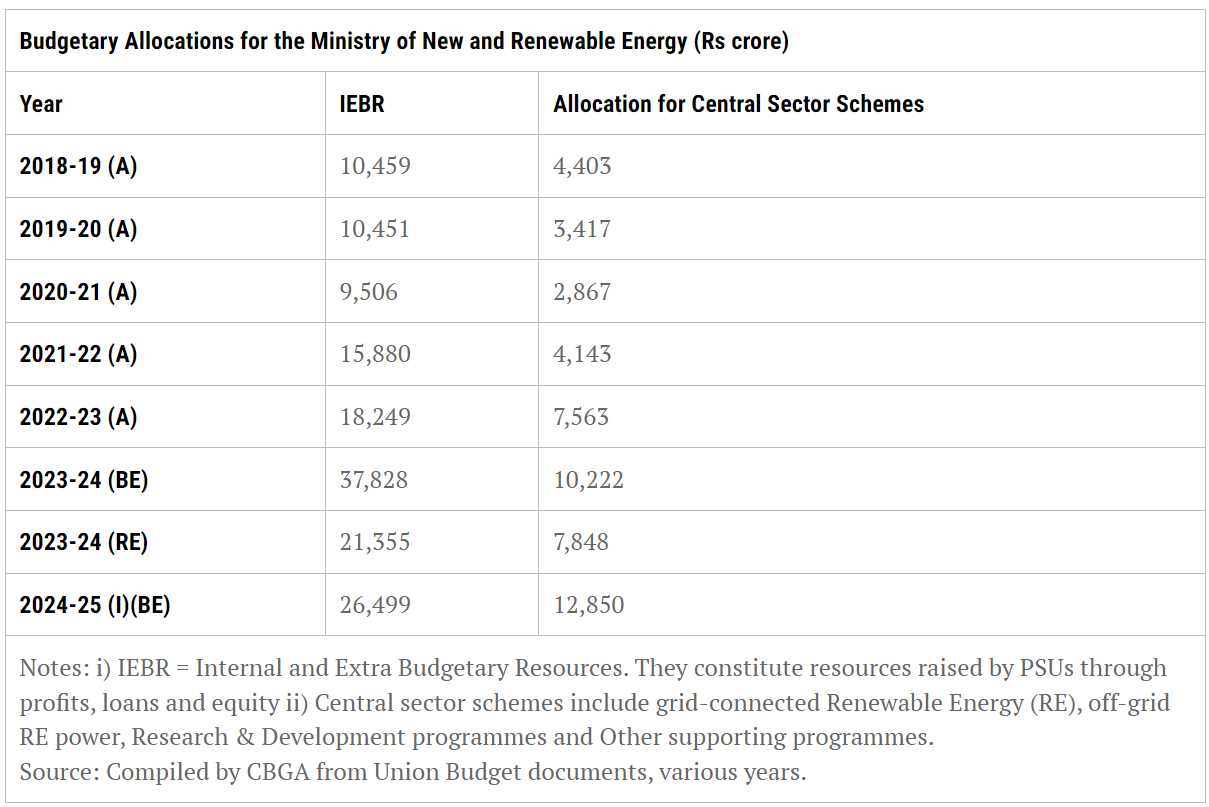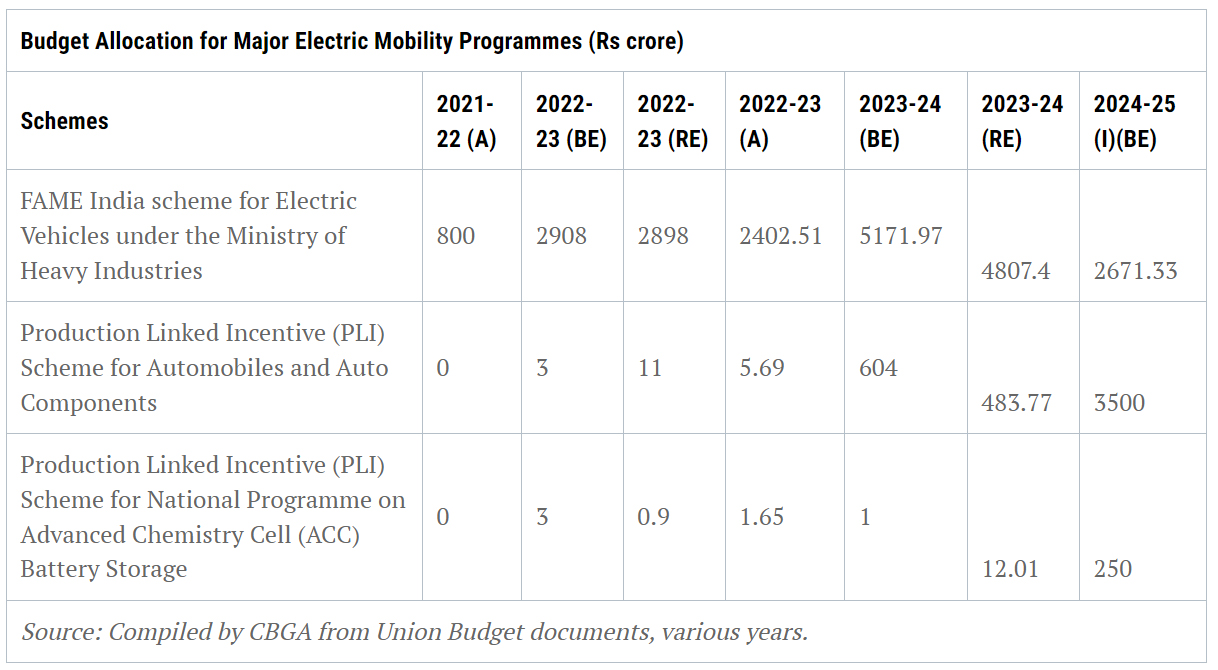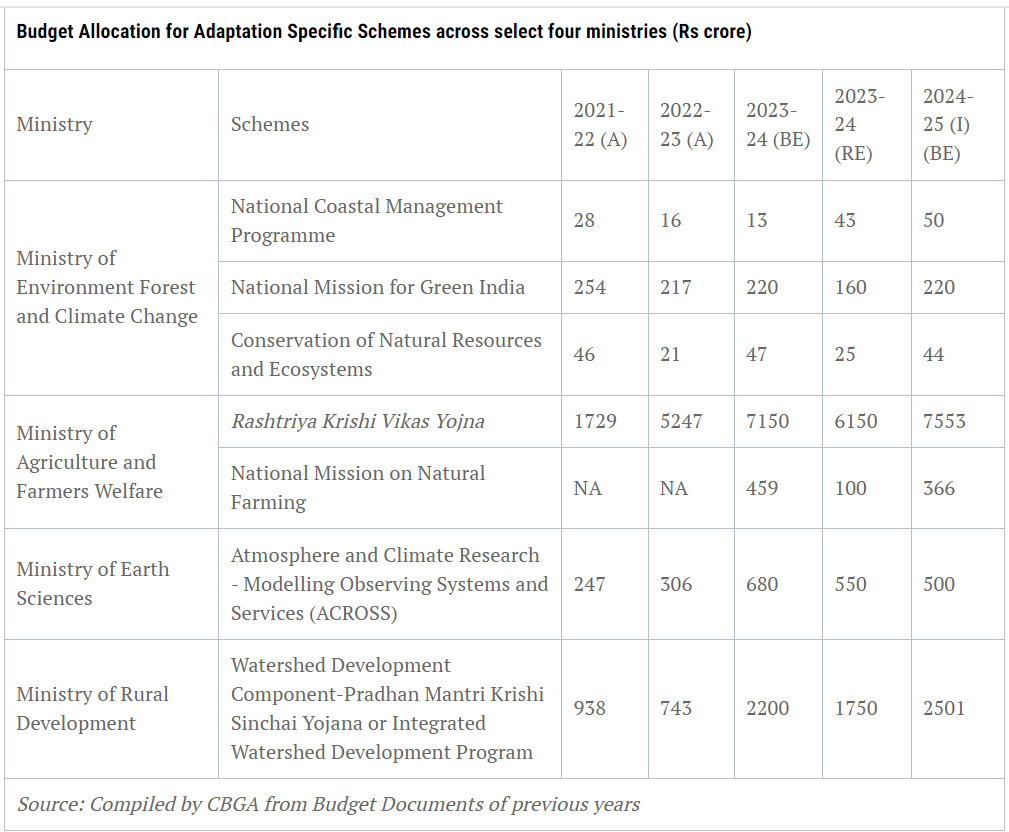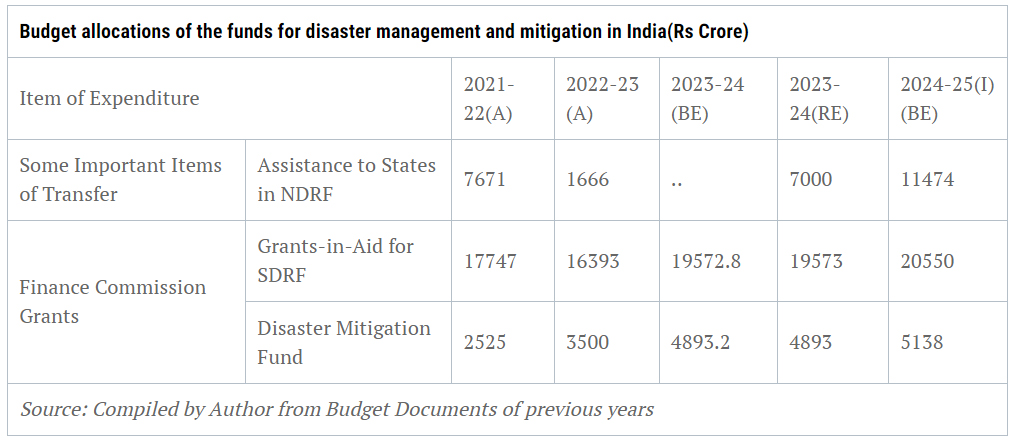Climate change remains one of the key global concerns of the current century, and the issue is more precarious for India. As a developing economy in the Global South with a significant population with socio-economic vulnerabilities, India confronts heightened exposure to climate change impacts, compounded by the challenge of being the third-highest global greenhouse gas emitter.
Union Finance Minister Nirmala Sitharaman’s budget speech for the Union Budget (Interim) 2024-25 recognised the persisting issue by mentioning, “India assumed G20 Presidency during very difficult times for the world. The global economy was going through high inflation, high interest rates, low growth, very high public debt, low trade growth, and climate challenges.” The interim budget speech reaffirmed India’s commitment for ‘net-zero’ by 2070 by highlighting measures in four key thematic areas namely: Green Energy, Electric Vehicles, Bio-Manufacturing and Bio-Foundry and finally Blue Economy. The following analysis of the Interim Budegt’s allocations and announcements categorises the discussion with three broad areas of climate action, i.e., mitigation, adaptation and finally disaster resilience/management.

The Interim Budget maintains increased allocations for the Union Ministry of New and Renewable Energy (MNRE), reflecting the government’s dedication to initiatives promoting clean energy. In addition to boosting Gross Budgetary Support (GBS), financial support is extended through Internal and Extra Budgetary Resources (IEBR) obtained from Public Sector Undertakings (PSUs). Notably, there is heightened IEBR support for the Indian Renewable Energy Development Agency (IREDA), a crucial PSU collaborating with MNRE. The IEBR for 2024-25 (Interim) is Rs 26,499 crore, showing an increase from the revised estimate of Rs 21,355 crore in 2023-24. Another key announcement which was focused on the aspect of Green Energy was phased mandatory blending of compressed biogas (CBG) in compressed natural gas (CNG) for transport and piped natural gas (PNG) for domestic purposes. This announcement followed through an increased allocation for the total Bio-Energy Component in the current budget of Rs 300 crore which is a considerable increase from the revised estimate of 2023-24 that is of Rs 75 crore.

The interim budget prioritises schemes aligned with renewable energy capacity highlighting the government’s commitment to climate change mitigation.The allocation of Rs 600 crore in 2024-25 (Interim) for the National Green Hydrogen Mission underscores a deliberate emphasis on the advancement of green hydrogen technologies. The Interim Budget underscores the government’s dedication to strengthening the electric vehicle (e-vehicle) ecosystem, particularly by increasing allocations for schemes aimed at enhancing manufacturing in electric mobility. This encompasses the Production Linked Incentive (PLI) schemes for the automobile and auto component sectors, along with the introduction of advanced chemistry cell (ACC) battery storage in 2022. The sustained focus on manufacturing schemes is pivotal for expediting the growth of electric mobility. Positive outcomes have resulted from incentives provided to electric vehicle (EV) buyers under the FAME-II scheme, with 1,341,459 EVs incentivized as of January 31, 2024.
One thing to note is that despite the increase in the EV registrations under the Fame II scheme, the budgetary allocation for the scheme has been lower for the upcoming fiscal year. This shift suggests potential changes in priorities or adjustments in resource allocation for the upcoming fiscal year.
The other key announcements in line with India’s Green Energy focus are: Rooftop Solarisation Programme with a revamped target of 1 crore household, viability gap funding will be extended to tap into the potential of offshore wind energy starting with an initial capacity of 1 gigawatt, coal gasification and liquefaction capacity of 100 MT to be set up by 2030.
Adaptation measures
The current interim budget has a larger allocation, announcements highlighting focus towards mitigation measures rather than the adaptation measures. Two key announcements were made during the budget speech of the interim budget which can cater to climate adaptation. The first one is a new scheme to be launched for bio-manufacturing and bio-foundry aiming to provide environment friendly alternatives such as biodegradable polymers, bio-plastics, bio-pharmaceuticals and bio-agri-inputs. However, it is to be noted that this scheme can also have a contribution towards mitigation aspects. The other announcement entails promoting climate resilient activities for blue economy 2.0, a scheme for restoration and adaptation measures, and coastal aquaculture and mariculture with integrated and multi-sectoral approach will be launched. Another adaptation specific scheme which was launched recently in 2023 under the purview of the Union Ministry of Agriculture and Farmers Welfare (MOA & FW) was the National Mission on Natural Farming, it is important to note this as it saw considerable allocation in the current interim budget.
However, if we look at the allocations in the current interim budget, a number of existing adaptation specific schemes are now amalgamated into another comprehensive mission or scheme intervention or by being redirected as secretariat roles to ministries. Some notable examples of significant budgetary components that are either discontinued or subsumed include the National Adaptation Fund, Total-Environment Protection, Management, and Sustainable Development, which were under the purview of the Ministry of Environment, Forest, and Climate Change (MOEFCC). Similarly, the Rainfed Area Development, National Project on Soil Health and Fertility, and Promotion of Agricultural Mechanization for in situ-crop residue management, under the MOA & FW, are now integrated into the Rashtriya Krishi Vikas Yojana. The existing adaptation specific schemes with continuation and allocations in the current budget are spread across various ministries.

Disaster Management and Mitigation
Loss and Damage financing is now emerging as the third pillar of climate financing internationally, and it covers the larger impacts of climate change induced disasters. India has existing budgetary provisions for disaster resilience allocating funds for disaster management and mitigation through transfers and grants from the Finance Commission. In addition to the established National Disaster Management Fund, a new entity called the National Disaster Mitigation Fund has been formed following the suggestions from the 15th Finance Commission. This fund adopts a new approach in devolving funds to State Disaster Mitigation Funds, and the allocations for these funds have an increasing trend. This trend indicates a growing demand for improved disaster responsiveness.

The Interim Budget allocations continues India’s focus towards Green Energy. Over the years, the increasing allocation trends towards clean energy initiatives has positively resulted achieving 180.2 Gigawatts of renewable energy capacity. However, the renewable generation capacity from April to December 2023 remains at 21.94 per cent whereas larger dependency still lies on thermal power at 74.93 per cent. This necessitates to focus on not just increasing allocations and efforts towards reaching India’s 500-Gigawatt target by 2030 but also increased efforts towards increasing renewable energy’s generation capacity to strengthen India’s mitigation efforts. This interim budget’s allocation trends have a tilt towards mitigation efforts, but considering India’s population with climate stressed vulnerabilities, sustained policies with appropriate allocations need to be extended to build adaptive resilience. Finally, the operationalisation of the Global Loss and Damage Fund and India’s active participation in the same, realises the extensive losses due to the climate induced disaster and stresses. The interim budget’s allocations towards disaster management and mitigation are commendable but it is high time to enable Loss and Damage financing. This creates the need for a separate policy framework for climate induced disasters, especially for the most vulnerable populations, as India does not separately have a framework for climate change induced disasters. The inter-sectoral and widely impacting stresses of climate change need balanced allocations and efforts for mitigation, adaptation and disaster resilience as all three remain equally pertinent.


 16 February, 2024
16 February, 2024